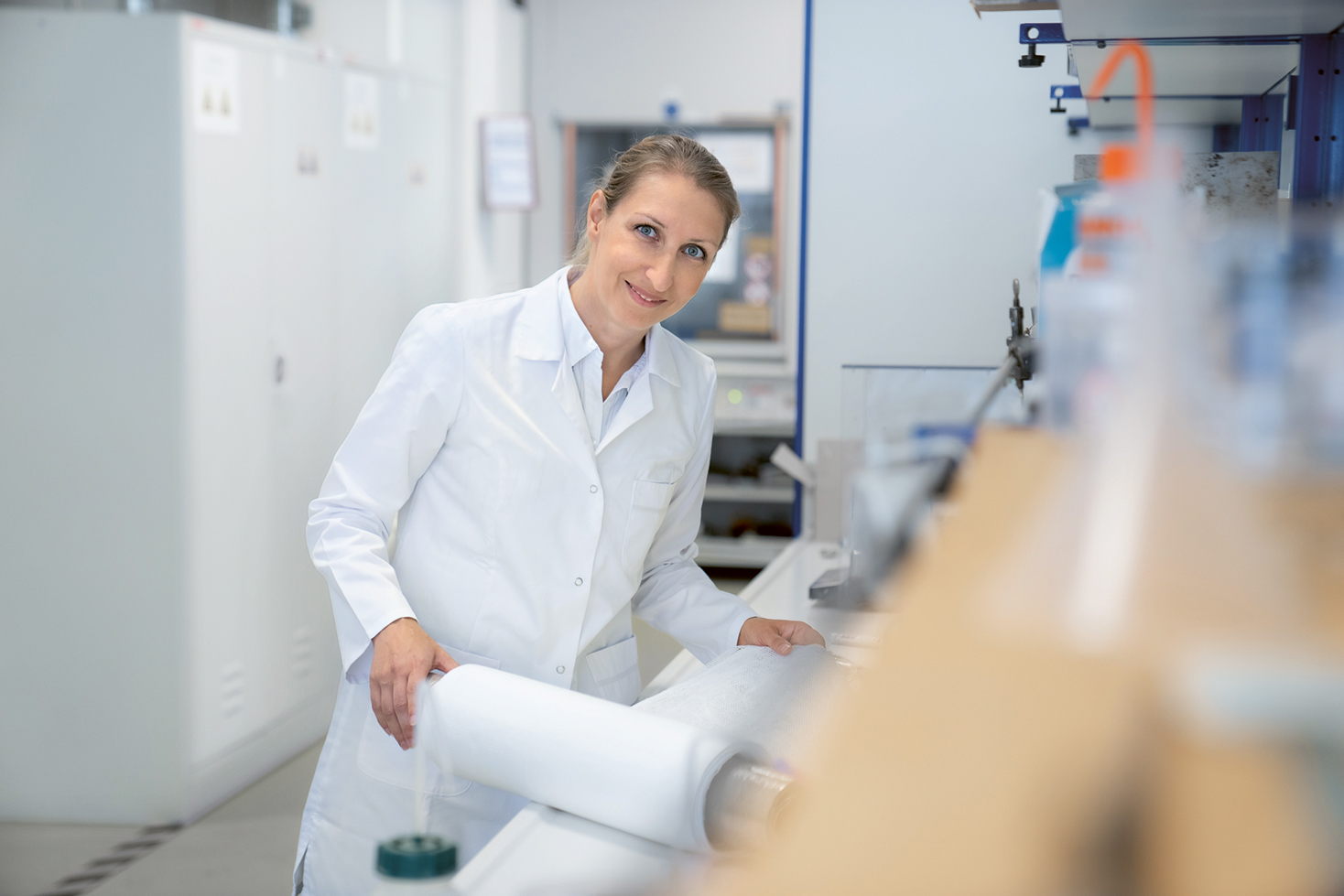As a global technology company, the Freudenberg Group is an enabler of key technologies. Seven Business Groups and Freudenberg Technology Innovation are actively researching and developing solutions for the hydrogen industry. This article presents three examples of how Freudenberg is helping to shape the energy transition through innovative products.

Dr. Anja Coenen, Managing Director, Fuel Cell Components at Freudenberg Performance Materials (FPM)
“We develop innovative products, work with our customers to improve processes, and drive the industrialization of fuel cells and electrolyzers for the production of green hydrogen,” says Dr. Anja Coenen, Managing Director, Fuel Cell Components at Freudenberg Performance Materials (FPM), as she sits in her office at the company’s Weinheim site.“That means we are making an important contribution to the energy transition and the development of new, environmentally friendly technologies.” For more than 20 years, the FPM Business Group has been developing gas-diffusion layers (GDLs) for fuel cells and, more recently, for electrolyzers. The components are produced at the Weinheim location. The quantity is expected to more than double next year. The customers are in Europe, North America and Asia, many of them in the heavy-duty transport sector.
Freudenberg has just invested 30 million euros in the construction and expansion of production facilities to increase capacity and its ability to meet rising demand long-term. “There is already a great demand for GDLs in fuel cells, and it is increasing. We can deliver high volumes worldwide and respond individually to the desires of our customers,” Coenen said. “The market for equipping electrolyzers is still in its infancy, but demand is rising there as well.” Electrolyzers split water into its two components, hydrogen and oxygen. In turn, fuel cells are able to convert the hydrogen into the electric current that drives motors. Since hydrogen is playing an important role in the energy and transportation transition, it is expected that the demand for electrolyzers will increase worldwide over the next few years. Coenen said the goal is to continue to adapt the production of gas-diffusion layers to the needs of the market and expand output between now and 2030.
There is already a great demand for GDLs in fuel cells, and it is increasing. We can deliver high volumes worldwide and respond individually to the desires of our customers.
Dr. Anja Coenen, Managing Director, Fuel Cell Components at Freudenberg Performance Materials (FPM)
In another building a few hundred meters away, Dr. Aline Fluri is sitting in front of her computer. She is also involved with hydrogen. “In Europe and throughout the world, it is a challenge to scale up the production of components and systems and to build up a hydrogen economy with infrastructure and transportation,” says Fluri, who supports strategic Group-wide projects on behalf of Chief Technology Officer and Board of Management Member, Dr.Tilman Krauch. “The National Hydrogen Strategy launched in 2020 is a cornerstone for the market ramp-up of hydrogen technologies and the future production, transport and use of hydrogen in Europe.” The German Federal Ministry for Economic Affairs and Energy and the Federal Ministry for Transportation have selected 62 major German projects that will be supported as “Important Projects of Common European Interest (IPCEI)” for hydrogen technologies and systems. They include investments in the production of green hydrogen, hydrogen infrastructure and the use of hydrogen in industry and for mobility. To this point, IPCEI Hydrogen has been the largest project of its kind in Europe. A project underway at the Freudenberg Performance Materials Business Group is part of it.

Dr. Aline Fluri, Assistant to the CTO/Manager Strategic Projects
It is exciting to be able to experience and shape the industrialization of hydrogen technologies.
Dr. Juliane Jungk, Director, Labs & Services, at Freudenberg Technology Innovation

Dr. Juliane Jungk, Director, Labs & Services, at Freudenberg Technology Innovation
“It is exciting to be able to experience and shape the industrialization of hydrogen technologies,” says Dr. Juliane Jungk, a chemist who is Director, Labs & Services, at Freudenberg Technology Innovation, as she stands in a laboratory. “And we are just at the start of its development. For example, to be able to test components for fuel cells and other products, we need new testing methods and have to think on a larger scale.” It is a challenge, for example, to characterize entire fuel cells or to test seals in contact with hydrogen under high pressure. Growing numbers of queries from various Business Groups have ended up at her office. These organizations are looking for larger testing volumes along with new requirements and testing methods. Jungk came up with the idea und worked out the concept for a main hydrogen testing center at the Weinheim site for all the Business Groups. How much hydrogen will be needed? Where is it supposed to come from? And what level of testing capacity will be needed in several years? “The goal is to exploit synergies, develop suitable testing methods, and be able to test fuel cells and other products for external customers long-term as well.”

